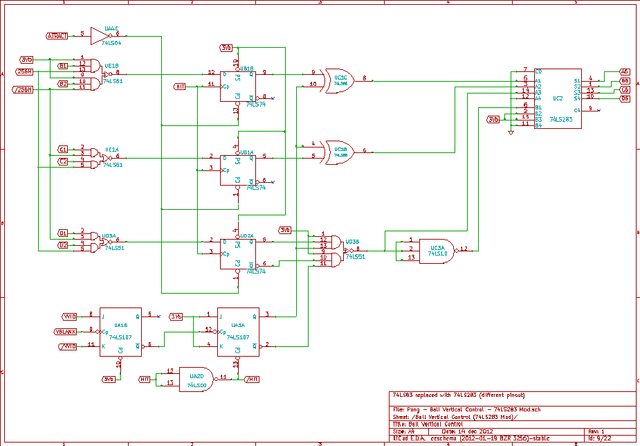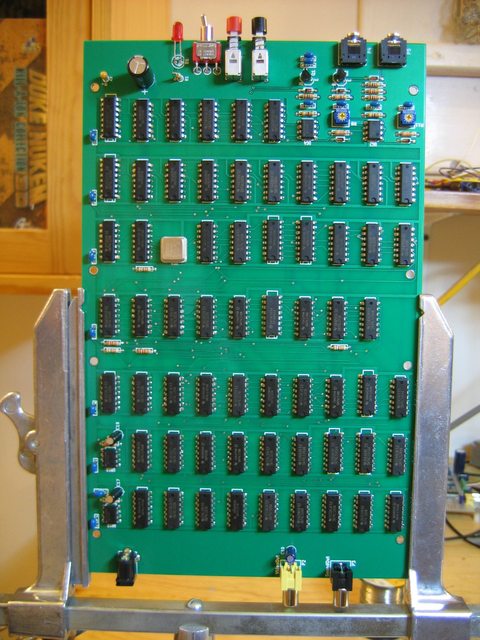Pong machine reconstruction

In 1972, engineer Allan Alcorn was faced with the need to make a simple video game, which would have a moving point, two guided rackets and numbers to display the bill. In fact, this assignment was given to help a specialist in electrical engineering to become familiar with Atari, who did not have experience in the emerging field of entertainment at that time. It is unclear where the idea came from - whether from a tennis simulator on a PDP-1, or stolen from a failed Magnavox Odyssey prefix, released the same year, but Pong turned out to be historically the first commercially successful computer game.
There was no mortgaged program, operating systems, RAM, or processors; logical elements ensured the operation of graphics, sound and control. The gaming machine consisted of 66 individual microcircuits, and only for the home version it was all assembled into a separate crystal. The craftsman from Canada decided to recreate the original Pong according to the TTL-based schemes that have come down to it.
')

This is a schematic diagram of the original Pong slot machine. Separate parts are highlighted in color. Due to scanning artifacts, some tagging is difficult to read. Fortunately, Dan Boris from the Atari Age forum rewritten the scheme in a more understandable way.


Many elements of that time are outdated and are no longer available, so they were replaced by available analogues.

Today, the design of the board is much simpler than in the 72nd, when everything had to be done by hand. The craftsman checked the video synchronization circuits, rackets and ball on the breadboard.

66 chips, thanks to which the game is possible. Here, only the simplest elements of the non-AND functions, exclusive OR, inverters, triggers, counters and timers.


Due to a later corrected error in two lanes, the ball only pushed up.
Update: The author of the remake has posted a list of parts and concepts . He also plans to create a small batch of ready-made DIY-kits.
Source: https://habr.com/ru/post/162771/
All Articles